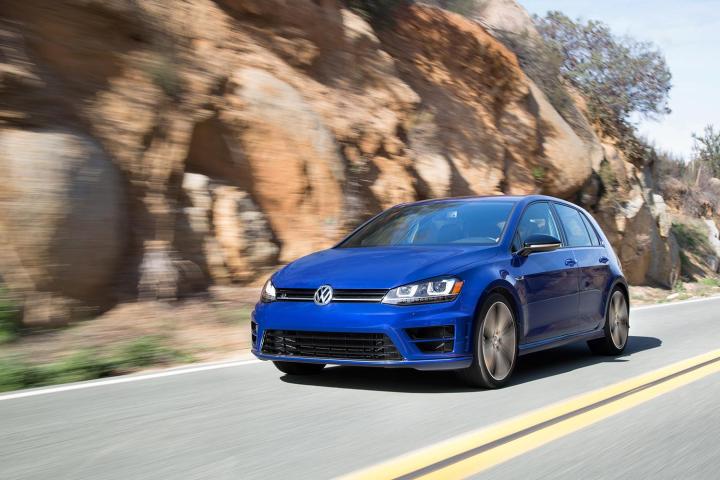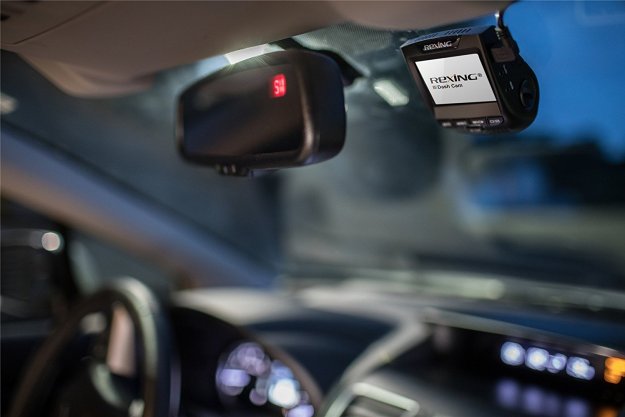
The new Golf R is something different, along with the Subaru WRX STI; it’s part of a new generation of family-friendly sports cars. And perhaps the standout feature that’s taken the car from mundane to mad is its highly specialized 4Motion all-wheel drive system (AWD) that lives behind the curtain.
Granted, previous Golf R variants boasted AWD, but none was quite as advanced as the current-gen. The system doesn’t just help the Golf R to be one of the best driving cars on the market; it also shows off one of the VW brand’s unique advantages.
Normally, when it comes time for a company to build a hot version of one of its family cars, it can’t get around the front-wheel drive architecture on which the car is built. Take the Ford Focus ST, a car at the limit of front-wheel drive grip and power, as perfect example. Volkswagen avoided this problem with the Golf R, thanks to the revolutionary MQB modular platform, which underpins the 2015 Golf.
The rest of the Golf family might be front-wheel drive only, but the platform was built to accommodate a wide range of cars and designs, including all-wheel drive variants. This means that the Golf R can handle more power and deliver a better driving experience.
Physics-bending
The Swedish wizards of traction at Haldex build the 4Motion system itself. However, unlike most of the systems built by Haldex, the fifth-generation system in the Golf R is designed purely for driving pleasure and performance.
The mechanical heart of this system is the “Haldex coupling.” The coupling is an electro-hydraulically operated clutch that is capable of attaching and decoupling the rear axle. Under normal driving conditions the Golf R sends power to its front wheels only, saving fuel. When the coupling engages, though, it can send up to 50 percent of the power to the rear axle. This coupling is aided by the deepest, darkest Teutonic magic that VW could come up with. By which I of course mean computers … magic computers.

These computers can infinitely regulate torque split by activating the oil pump in the coupling. As oil pressure in the coupling increases, the clutch plates close, increasing power to the rear wheels. The really clever thing isn’t just the ability to send power, but also the ability to predict the need for it.
Most AWD systems respond to wheel slip detected by sensors that monitor wheel speed. The 4Motion system tracks vehicle speed, acceleration, lateral torque, and yaw to prevent wheel spin from occurring in the first place.
As if that weren’t enough, the 4Motion system works in tandem with pair of torque-vectoring systems known as electronic differential lock (EDS) and cross differential lock (XDS). Both systems use the brakes to split torque between left and right hand wheels in tandem with the Haldex coupling’s front rear split.
The same devilish computer system that splits torque between the front and rear axles uses the brakes to balance torque from left to right.
EDS is a powerful henchman to the cars stability control system. It works to counter any wheel spin by braking the slipping wheel to transfer power to the wheels with grip. This helps not just overly eager drivers, but also keeps the Golf R firmly planted on snow or other low traction surfaces.
Meanwhile XDS is all about dynamic driving. At high speeds the XDS system uses the brakes to mimic a limited slip differential on both the front and rear wheels. In practice, XDS benefits from being integrated with the entire 4Motion system to create a positive symphony of technology.
As the Golf R enters a corner, sending power to the front wheels, it will naturally begin to understeer as the car’s momentum pushes it in a straight line. The 4Motion system detects this with yaw, torque, acceleration, dark matter, and midichlorian sensors (only some of those are made up, I swear), and activates the Haldex coupling sending power to the rear wheels.
This power pushes the rear end out countering the understeer. If the corner is taken at high speed, the XDS system will activate as it detects that the inside wheels are lightly loaded. By braking the inside wheel, it allows more power to be sent to the outside wheels, forcing the car back to the apex of the corner. All of this happens in just a few milliseconds, and without the driver ever noticing the epic battle between German cleverness and the laws of physics.

All the driver notices is that the Golf R handles like a rabid hummingbird. In fact, the Golf R really doesn’t feel much like a front-wheel drive based car at all. Instead, it has the distinctive agility of a go-kart.
Brand muscle
In some ways, this shouldn’t come as a surprise. Volkswagen has been working with Haldex since the Golf Mark 4 was released in 1998. Thanks to this long relationship and Volkswagen’s size and resources, VW has been able to have a major influence on Haldex designs.
The Golf R literally fights the laws of physics, in the pursuit of perfectly neutral handling.
As Guido Sever, the Project Manager for Vehicle Development explained to us “Volkswagen has a strong in-house engineering force and the highest ranking in-house production depth (vertical integration) in the industry, but also holds strong supplier relationships. That mixture is what makes Volkswagen Group so powerful.”
Translating this from corporate speak, VW has the resources and knowhow to develop its own systems. However, because of its size and influence, it is capable of farming projects out to specialists. This ability is what can create not just a system as special as the 4Motion AWD in the Golf R, but also allow the car to exist in the first place.
The Golf R would not be a moneymaking prospect for most companies. After all, just 500 are coming to the U.S. this year. VW can make it happen, though, because of the broad base of technology and relationships it has in the industry. After our first month with the Golf R, we can say we are exceptionally glad about that. Because, above all else, it is a joy to drive.


